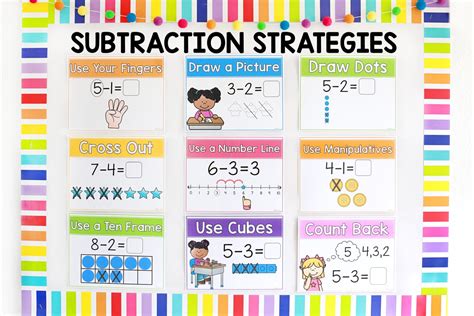How To Teach Subtraction Kindergarten
Ronan Farrow
Mar 26, 2025 · 3 min read

Table of Contents
How to Teach Subtraction in Kindergarten: A Fun and Engaging Approach
Subtraction can seem daunting for kindergarteners, but with the right approach, it can become a fun and engaging learning experience. This guide provides practical strategies and activities to effectively teach subtraction to your little ones, fostering a strong foundation for future math skills.
Understanding Subtraction: Laying the Foundation
Before diving into formal subtraction, ensure your kindergartners grasp the fundamental concept. Start with concrete examples using manipulatives.
Using Manipulatives:
- Real-world objects: Begin with objects they can see and touch, like blocks, toys, or counters. Start with simple subtractions like "You have 5 apples, you eat 2, how many are left?" Let them physically remove the objects to visualize the process.
- Visual aids: Use pictures and drawings. Show them a picture of 3 birds, then cross out 1, explaining that 3 - 1 = 2. This visual representation strengthens their understanding.
Engaging Subtraction Activities for Kindergarteners
Make learning subtraction fun and memorable by incorporating various engaging activities.
Games and Activities:
- Take Away Games: Use simple games involving taking away objects. For example, have them start with a certain number of blocks and remove a specified amount, counting what’s left.
- Story Problems: Create simple word problems that relate to their everyday lives. For example, "Lily had 4 cookies. She gave 1 to her friend. How many cookies does she have left?"
- Number Lines: Introduce number lines to visually represent subtraction. Start at the larger number and count backwards. This helps them visualize the process.
- Subtraction Songs and Rhymes: Integrate catchy tunes and rhymes to reinforce subtraction facts. The rhythm and repetition aid memorization.
From Concrete to Abstract: Gradual Progression
Gradually transition from concrete manipulatives to more abstract representations.
Transitioning to Symbols:
- Introduce the minus sign (-): Once they understand the concept, introduce the minus sign and the equals sign (=). Start with simple equations like 5 - 2 = ?.
- Practice with worksheets: Use age-appropriate worksheets with simple subtraction problems. Ensure the worksheets are visually appealing and incorporate colorful images to keep them engaged. Start with problems involving smaller numbers.
- Flashcards: Use flashcards with simple subtraction problems to reinforce their learning and aid memorization.
Addressing Common Challenges
Some children might struggle with subtraction initially. Here’s how to address those challenges:
Common Challenges and Solutions:
- Difficulty with the concept: If a child struggles with the concept, spend extra time using manipulatives. Break down problems into smaller steps. Use different types of manipulatives.
- Memorization issues: Utilize repetition, games, songs, and flashcards to aid memorization. Focus on mastering smaller number facts first before progressing to larger numbers.
- Counting errors: Emphasize accurate counting skills. Practice counting both forwards and backwards.
Making it Fun and Engaging: Key Considerations
Remember that keeping it fun and engaging is key to success.
Keeping it Fun:
- Positive Reinforcement: Always offer positive reinforcement and encouragement. Celebrate their successes, no matter how small.
- Patience and Understanding: Be patient and understanding. Learning takes time, and each child learns at their own pace.
- Variety: Incorporate a variety of activities to keep them engaged and prevent boredom.
By following these strategies and adapting them to your students' individual needs, you can effectively teach subtraction in kindergarten and build a solid foundation for future math success. Remember, patience, positive reinforcement, and engaging activities are crucial for creating a positive and effective learning environment.
Featured Posts
Also read the following articles
| Article Title | Date |
|---|---|
| Tahoe Seats How Many | Mar 26, 2025 |
| How To Write The Yale Supplements | Mar 26, 2025 |
| How To Split A Hive Without Finding The Queen | Mar 26, 2025 |
| How To Tell Gear Ratio | Mar 26, 2025 |
| How To Start A Card Shop | Mar 26, 2025 |
Latest Posts
Thank you for visiting our website which covers about How To Teach Subtraction Kindergarten . We hope the information provided has been useful to you. Feel free to contact us if you have any questions or need further assistance. See you next time and don't miss to bookmark.
